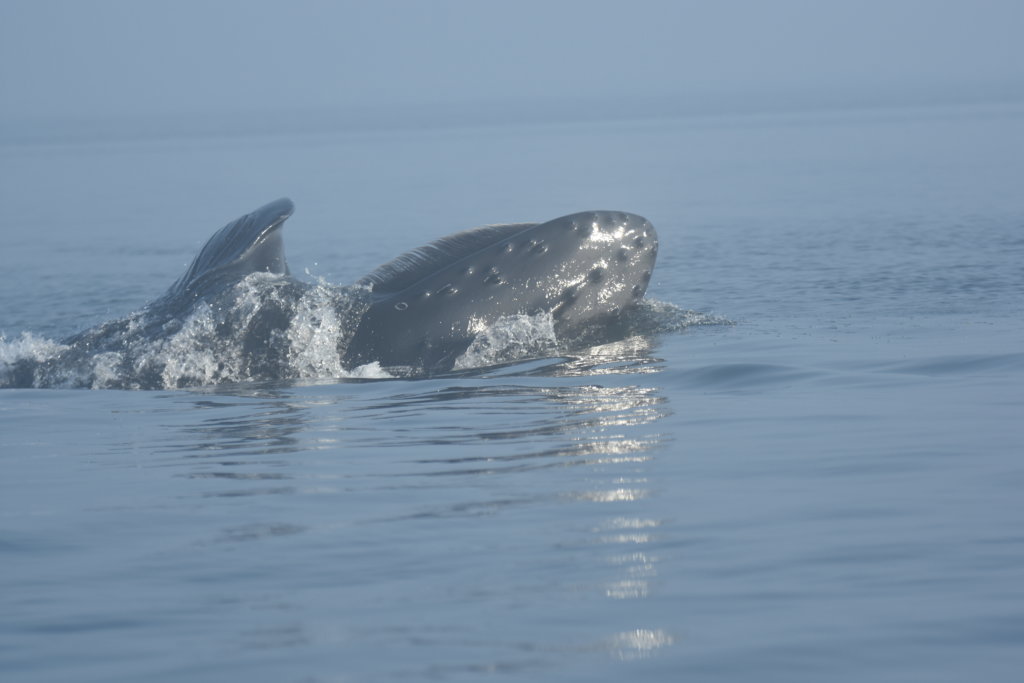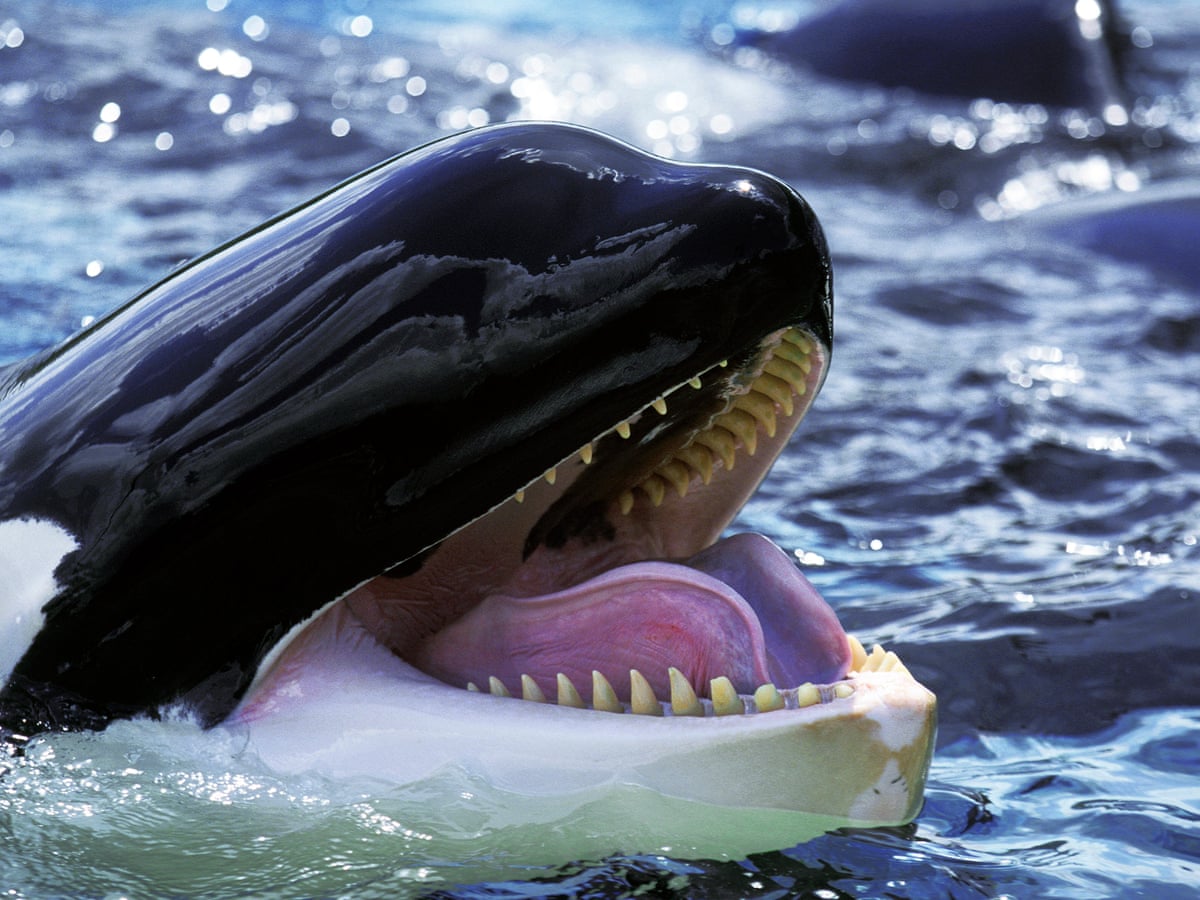Whales Smithsonian Ocean

Gradually, their nostrils moved to the top of their heads so that they could breathe easily without the need to tilt their heads while swimming. Currently suspended at the center of the Sant Ocean Hall is a life-size model of a North Atlantic right whale named Phoenix. The result of four years of work, and collaboration between exhibit fabricators, whale biologists, sculptors, painters, engineers, and many others, this exhibit is unique and exciting in that it represents a live animal. Phoenix has been tracked in her Atlantic Ocean environment by marine biologists at the New England Aquarium in Boston, ever since her birth off the coast of Georgia in 1987.
Most diverse songs
Fossils of Basilosaurus were found in the United States in 1840s, and the Smithsonian has displayed a skeleton of this early whale since the late 19th century. A complete skeletal mount of Basilosaurus can be seen on display today in the Sant Ocean Hall. In all whales, the ear canal is plugged by a dense wax, which can tell us a lot about the life history of the whale it comes from. Recent studies have investigated the molecular basis of hair loss in cetaceans and have provided some new insights into this process.
Communication
Between 1970 and 1999, 45 North Atlantic right whales were found dead in coastal waters of the U.S. east coast—and ships killed one-third of them. Other whales, like the fin whale, blue whale, and humpback whale, are also struck by passing ships. A study of humpback whales that live off the Gulf of Maine found that 15 percent of humpback whales in the region have injuries related to ship strikes.
10 incredible facts about the largest animal on Earth – the blue whale - Interesting Engineering
10 incredible facts about the largest animal on Earth – the blue whale.
Posted: Mon, 13 Feb 2023 08:00:00 GMT [source]
In the Food Web
One had been a group of over 3,000 baleen plates—the large bristly plates grow from the roof of a whale’s mouth and are used to sieve out the tiny krill that they feed on. Several feet long, the baleen in this collection was crammed in 30 cases at the museum’s offsite storage facility and nobody knew where they came from. With some tenacity and lots of research, the origins of the mystery collection were discovered and the baleen can be used to answer scientific questions.
SeaWorld's 'dangling hair' policy for trainers did not include ponytails, official says - Palm Beach Post
SeaWorld's 'dangling hair' policy for trainers did not include ponytails, official says.
Posted: Tue, 02 Mar 2010 08:00:00 GMT [source]
The museum is also home to Phoenix, a 45 foot, 2,300 pound full-scale model of a female North Atlantic right whale that hangs in the Sant Ocean Hall. She is one of many whale models that have graced the halls of the Museum, including the 1903 blue whale that was the first-ever cast of a whale, and the 1963 blue whale that replaced it. Navy agreed in 2015 to end mid-frequency sonar training in specified areas where whales congregate, and in 2016 they extended the exclusion to low-frequency hunting sonar. In waters near British Columbia, Canada, a voluntary speed reduction policy during the season when endangered orcas migrate through Haro Strait was put in place for the first time in 2017. The initial policy successfully decreased noise pollution from commercial ships and was continued in 2018. The presence of whale-watching boats can alter whale behavior, including scaring them off from important feeding areas, and boat noise and pollution are other sources of stress.

Every March thousands of dolphins are secretly corralled in a particular cove. A few are selected and sold to dolphinariums and the rest are slaughtered and their meat sold in local supermarkets. Porpoises belong to the family Phocoenidae, of which there are six members. Porpoises have stouter bodies and shorter beaks than the true dolphins and are typically smaller, with triangular dorsal fins. Baleen whales specialize in hearing low-frequency sounds for long-distance communication.
This helps them find and target their prey which typically consists of fish, squid and octopus. However, some Orcas also are known to eat sharks and even other marine mammals. Similar to humans, female cetaceans have long gestation periods, typically ranging from 10 to 17 months. Females usually give birth to one calf at a time and have a small number of young over their lifetimes. It is unclear when whales first evolved tail-first birth, but it likely happened when they moved from land to the sea (see Evolution section above). For modern whales, the mother often helps the calf get to the surface of the water for the calf’s first breath and then continues to help it by deterring predators.
This is how they can add complexity to the high-frequency sounds used in echolocation. Whales are able to survive in deep or freezing polar water because of a layer of fat, called blubber, covering their entire body underneath the skin. Blubber is also less dense than the seawater cetaceans swim in, similar to wetsuits used for surfing or diving, which gives the animals buoyancy and helps them float. Blubber thickness has quite the range—varying from two to more than 12 inches thick depending on the species.

The most species-rich group of whales alive is today are the toothed whales, or Odontoceti. There are over 70 different species that are found from cold Arctic waters to warm tropical ones. The odontocetes include dolphins and porpoises, as well as the larger beaked and sperm whales, as well as river dolphins. The group includes many extinct lineages as well, which represented different types of extinct toothed whales that in some cases still have close relatives, while in others represented uniquely extinct groups. Although they don’t look furry, whales do have hair, Hodgins says, explaining that some whales and dolphins are born with what look like whiskers on their beaks. These whiskers quickly disappear because the animals have “absolutely no use” for hair to keep warm underwater.
Toothed whales (including dolphins and porpoises) all have teeth but the number, size and position, and even purpose of their teeth, varies from species to species. Some, like Orcas, use their teeth for grabbing while the long tusk of a male narwhal acts as a sensory organ and may help them “taste” the surrounding waters. One thing they have in common is that they do not use their teeth to chew their food! Toothed whales do not have molars for chewing their food, they swallow it whole or in large chunks. Some toothed whales use their tongues as pistons to suck in the food, using their teeth more socially than for feeding. One thing all toothed whales have in common is their sophisticated sonar systems called echolocation.
While the exact reason some whales are born with hair is still unknown it is a fascinating topic to talk about. Although whales may be observed with hair not all species are born with hair and those that do have hair generally lose it quickly. Harp Seals are well-known for their adorable, fuzzy babies, covered in thick white fur. In contrast to whales, which rely on a thick layer of blubber to maintain their body temperature, the harp seal’s fur serves this purpose. In evolutionary terms, we humans have only had big brains for about 200,000 years. In contrast, the current size of the sperm whale brain has changed little from that of its cetacean ancestors, which evolved some 55 million years ago.
Skimmers, like North Atlantic right whales, swim through patches of plankton with their mouths open as the water washes through the baleen, the tiny plankton are caught by the baleen and remain trapped in the their mouths. Rorqual whales like blue and humpback whales have a series of pleats running from their lower jaw to the belly button which expand when they are filled with water. They close down with their upper jaw and force the water through the baleen, capturing fish or krill. Gray whales are suckers, they literally suck amphipods from the bottom of the ocean taking in mouthfuls of mud and food before forcing the water, sand and mud through their baleen as they capture their prey.
Comments
Post a Comment